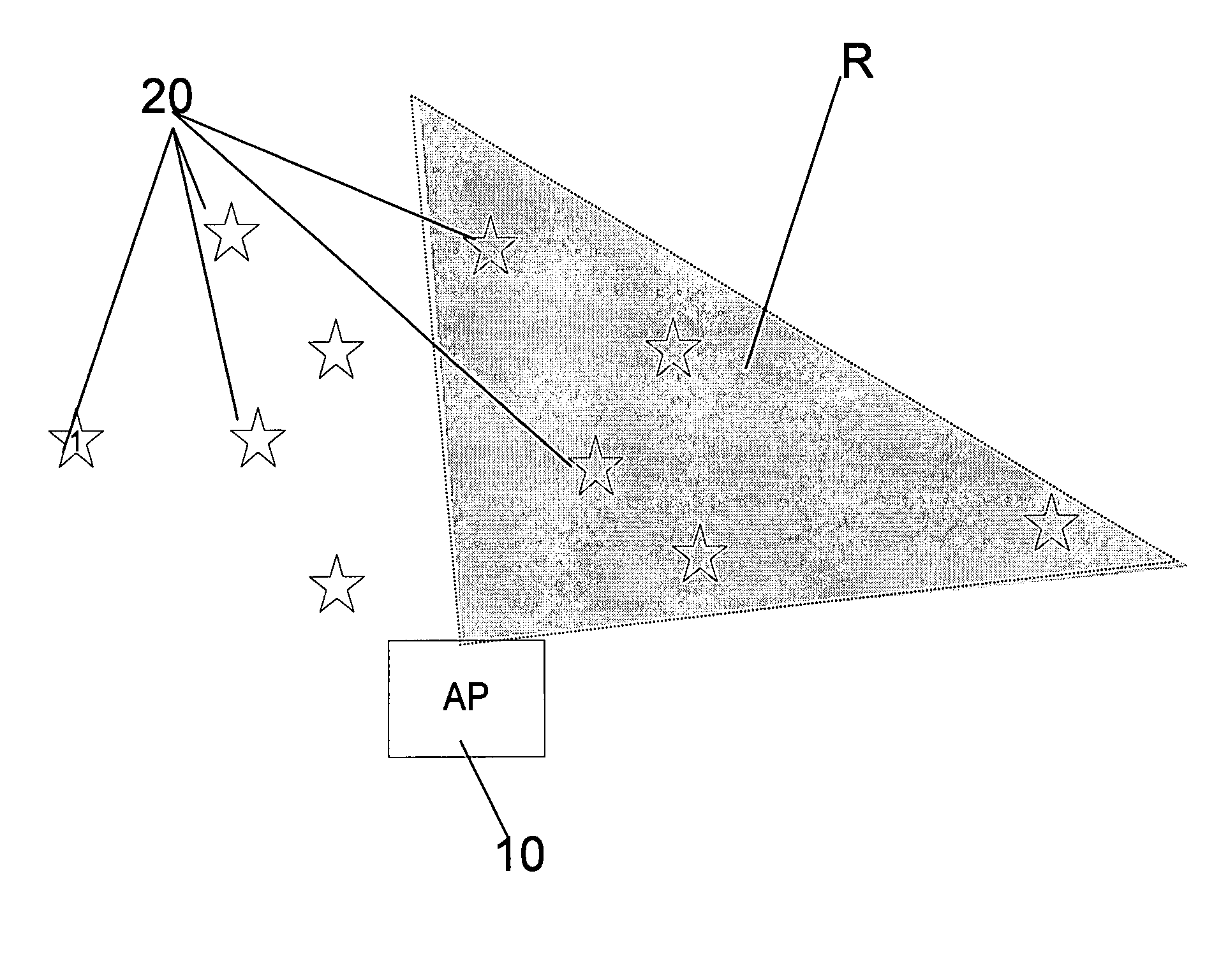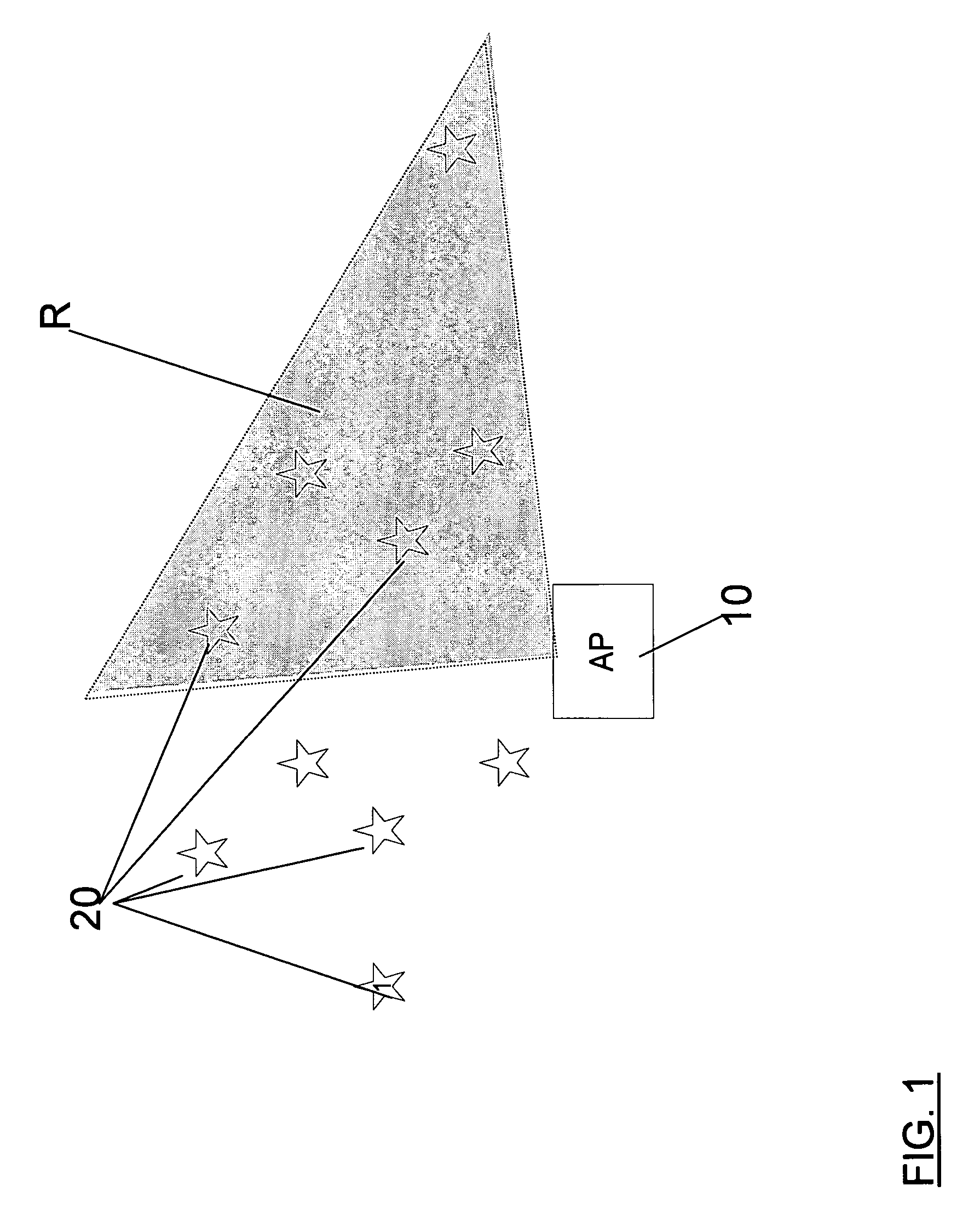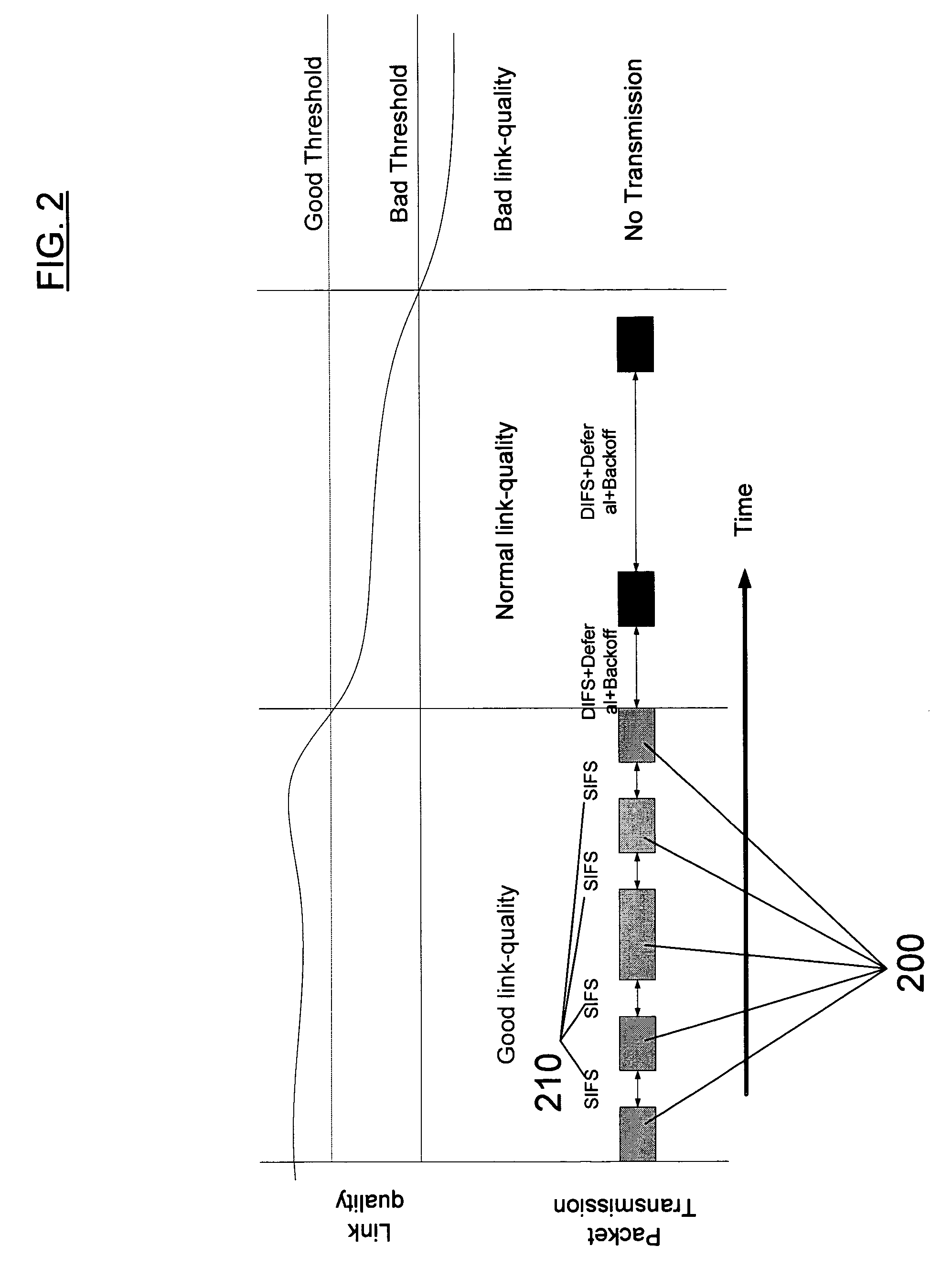Beamforming and distributed opportunistic scheduling in wireless networks
a wireless network and beamforming technology, applied in the field of wireless networking, can solve the problems of existing systems, inability to properly deliver packets, and limitations due to fixed amount of resources available, and routing protocols would not be able to do so
- Summary
- Abstract
- Description
- Claims
- Application Information
AI Technical Summary
Benefits of technology
Problems solved by technology
Method used
Image
Examples
Embodiment Construction
[0037]The preferred embodiments of the present invention can significantly improve upon existing methods and / or apparatuses.
[0038]According to the preferred embodiments, systems and methods are provided that address the issue of inducing and exploiting multi-user diversity in, e.g., a WLAN system in a substantially fully distributed and opportunistic manner.
[0039]According to some embodiments, a novel system architecture is presented that enables Wireless Local Area Network (WLAN) devices and networks to achieve improved performance by opportunistic exploitation of induced channel variations. Preferably, the system creates high channel variations using a beam-former at an Access Point (AP) and makes use of this induced channel variation using a distributed and opportunistic scheduling mechanism. In the preferred embodiments, the net result is a wireless system with significantly less collision probability leading to improvement in the throughput and energy consumption of the WLAN de...
PUM
 Login to View More
Login to View More Abstract
Description
Claims
Application Information
 Login to View More
Login to View More - R&D
- Intellectual Property
- Life Sciences
- Materials
- Tech Scout
- Unparalleled Data Quality
- Higher Quality Content
- 60% Fewer Hallucinations
Browse by: Latest US Patents, China's latest patents, Technical Efficacy Thesaurus, Application Domain, Technology Topic, Popular Technical Reports.
© 2025 PatSnap. All rights reserved.Legal|Privacy policy|Modern Slavery Act Transparency Statement|Sitemap|About US| Contact US: help@patsnap.com



